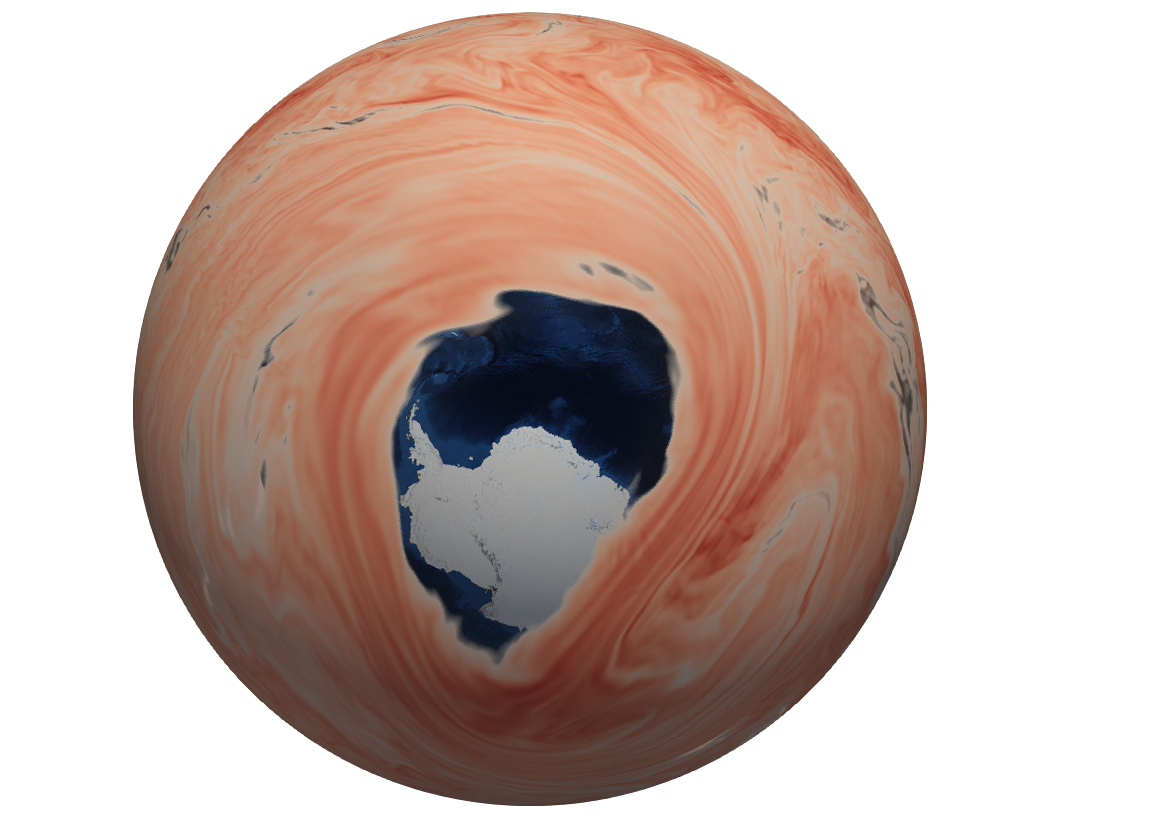Introduction
ICON-ART is the next generation model for seamless simulation of numerical weather forecast, climate prediction and atmospheric composition modelling. It is a joint development project of DWD (German Weather Service), MPI-M (Max-Planck-Institute of Meteorology), DKRZ (German Climate Computing Center), and KIT (Karlsruhe Institute of Technology). At IMK-ASF the simulations focus on the understanding of composition-climate interactions as well as atmospheric chemical and microphysical processes on different scales.
| Principal Investigator: | Dr. Roland Ruhnke |
| Project Management: | Dr. Roland Ruhnke |
| Researcher: | Prof. Dr. Peter Braesicke |
| Date published: | May 2022 |
| HPC Platform used: | HoreKa |
| Institute: | Institute of Meteorology and Climate Research - Atmospheric Trace Gases and Remote Sensing (IMK-ASF). |
| Affiliation: | Karlsruhe Institute of Technology (KIT) |
| Research Field: | Earth Sciences |
| Project ID: | ICON-ART |
Project description
This ICON-ART HPC project targets the analysis of atmospheric chemical processes and their interactions with the climate system.
The ICON-ART model system is the main tool to be employed. Components are the non-hydrostatic model system ICON (ICOsahedral Non-hydrostatic) (Zängl et al., 2015) and the aerosols and reactive trace gases module (ART). ICON solves the prognostic variables on an unstructured triangular grid, which is based on recursive refinement of a spherical icosahedron. The vertical discretisation is formulated in a height-based terrain-following coordinate system. Here, the smooth level vertical (SLEVE) coordinate implementation is used.
Integration in time is performed using an explicit two-time level predictor-corrector. Different time steps are used for the dynamical core on the one side and tracer advection, numerical dissipation and physics parameterisation on the other side. For efficiency reasons, the physics parameterisations are further split into fast-physics routines (turbulence, microphysics, saturation adjustment) and slow-physics routines (radiation). The fast-physics routines are called every physics time-step whereas the slow-physics routines are called a user-defined multiple of the physics time-step. To keep the integration numerically stable, the dynamical core is sub-stepped with respect to tracer advection, fast-physics parameterisations and horizontal diffusion. Usually, the time step used in the dynamical core is set to 1/5th of the fast-physics time step.
The ART module accounts for the interactions of atmospheric trace substances (gases and particles) and the state of the atmosphere within a numerical weather prediction/climate. Technically, the ART module follows the process splitting concept used for most processes in ICON. For more details about the numerical and technical implementation of ART into ICON see Rieger et al. (2015), Schröter et al. (2018) and Weimer et al. (2021).
With ICON-ART we investigate how new findings from the analysis of atmospheric composition observation data can be translated into numerical model parameterisations, and how changes in the description of physical and chemical processes in the atmosphere alter the impacts of short-lived greenhouse gases (such as methane or ozone) on the radiative forcing of the atmosphere.
The research with ICON-ART focusses in particular on the investigation of the impact of natural climate variability, and in particular the different processes related to solar variability, on the climate system, on the investigation of change signals caused by the ozone hole and on the influence of the middle atmosphere in terms of changes in stratospheric ozone on tropospheric OH amounts and hence the oxidation of the greenhouse gas methane, on the emission and transport of greenhouse gases as e.g. methane, on the calculation of effective radiative forcing and surface climate impacts of different halogen scenarios, and on the simulation of tropospheric water vapour isotopologues as a tool for testing model-based representations of moisture pathways from source to sink with its isotopologue enabled model version ICON-ART-Iso (Eckstein et al., 2018).
References
Eckstein, J., et al: From climatological to small-scale applications: simulating water isotopologues with ICON-ART-Iso (version 2.3), Geosci. Model Dev., 11, 5113-5133, https://doi.org/10.5194/gmd-11-5113-2018, 2018.
Rieger, D., et al, ICON-ART 1.0 - a new online-coupled model system from the global to regional scale, Geosci. Model Dev., 8, 1659-1676, doi:10.5194/gmd-8-1659-2015, 2015.
Schröter, J., et al: ICON-ART 2.1: a flexible tracer framework and its application for composition studies in numerical weather forecasting and climate simulations, Geosci. Model Dev., 11, 4043-4068, https://doi.org/10.5194/gmd-11-4043-2018, 2018.
Weimer, M., et al: Mountain-wave-induced polar stratospheric clouds and their representation in the global chemistry model ICON-ART, Atmos. Chem. Phys., 21, 9515-9543, https://doi.org/10.5194/acp-21-9515-2021, 2021.
Zängl, G., et al, The ICON (ICOsahedral Non-hydrostatic) modeling framework of DWD and MPI-M: Description of the non-hydrostatic dynamical core. Q.J.R. Meteorol. Soc, 141: 563-579. doi:10.1002/qj.2378, 2015.

